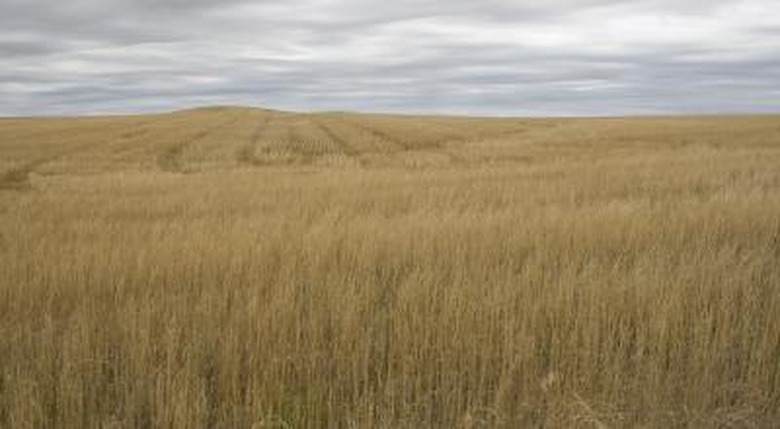Grassland Biome Facts
Grassland biomes are found all over the world in various forms. Often called plains, prairies or steppes, grasslands are any large land area with enough rainfall to support grass growth but not enough to sustain trees and other shrubbery. Grasslands are often considered a transitional biome between deserts and forests.
Grassland Biome Locations
Grassland Biome Locations
Grassland biomes are found on every continent except Antarctica. In North America, grasslands are called prairies and are found across the Midwestern United States and Canada. In South America, grasslands are known as pampas and have moist, humid climates. The steppes of Russia dominate Eurasia from the Ukraine to Siberia. Most of Africa's grasslands are actually classified as savannas because they feature scattered individual trees, but the veldt of South Africa is a true grassland.
Grassland Plants
Grassland Plants
There are three main types of grasslands, identified by the dominant grassland plants. The first is tall grasslands, which are sometimes referred to as temperate grasslands. They have grasses as high as five feet tall and receive upwards of 30 inches of annual rainfall. The American prairies are examples of temperate grasslands. At the other end of the spectrum are short grasslands, or steppes. Like their name indicates, they have short grass and very little rainfall, typically less than 10 inches a year. Any less water and they'd be desert. The steppes of Russia are short grasslands. Mixed grasslands exist between the two extremes. Their grasses grow about two or three feet high and receive an average of 15 to 25 inches of rainfall per year.
Grassland Habitat
Grassland Habitat
Temperate grasslands receive most of their rainfall in the spring and summer. Their temperatures have a wide range, from 100 degrees F in the summer to as low as -40 degrees F in the winter. Even in the summer, temperatures can dip dramatically at night. Temperate grasslands have dark, rich soil, gaining nutrients from the many layers of growing and decaying grass roots. This makes them the perfect environment for wild grasses like blue grama, buffalo grass, and galleta, not to mention flowers such as:
- asters
- goldenrods
- sunflowers
- clovers
- wild indigo
Animals found in temperate grasslands include:
- badgers
- deer
- foxes
- hawks
- jack rabbits
- mice
- owls
- prairie dogs
- snakes
Small animals do best in grasslands, since they don't need much cover to hide. However, plenty of large animals call grasslands home, including bison, elephants, giraffes and zebras.
Biome Definition
Biome Definition
The term "biome" simply means any large community of plants and animals occupying a distinct region. Grass is the defining feature in the grassland biome.
Endangered Grassland Biomes
Endangered Grassland Biomes
Grasslands are becoming rare. They are often converted for agricultural uses in order to take advantage of their rich soils. Global warming is also posing a threat, with rising temperatures turning many grassland biomes into deserts.
Cite This Article
MLA
Lynch, William. "Grassland Biome Facts" sciencing.com, https://www.sciencing.com/grassland-biome-5393602/. 22 November 2019.
APA
Lynch, William. (2019, November 22). Grassland Biome Facts. sciencing.com. Retrieved from https://www.sciencing.com/grassland-biome-5393602/
Chicago
Lynch, William. Grassland Biome Facts last modified March 24, 2022. https://www.sciencing.com/grassland-biome-5393602/
